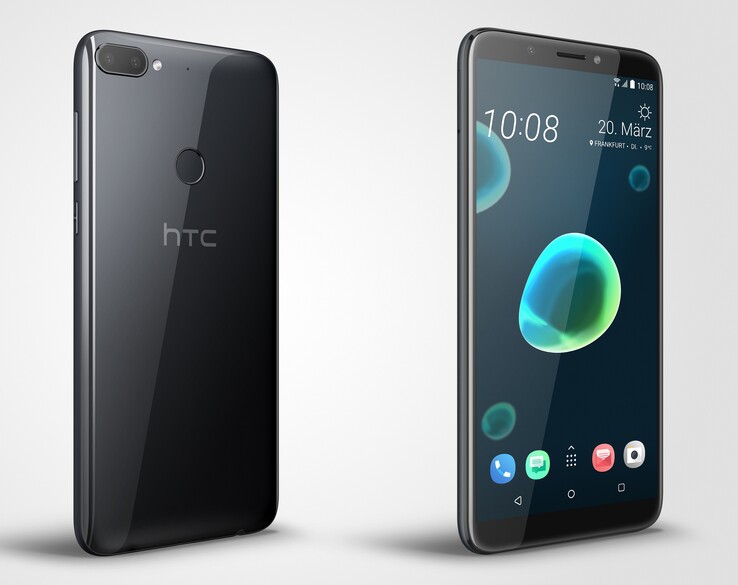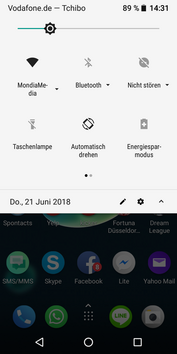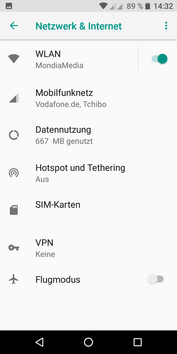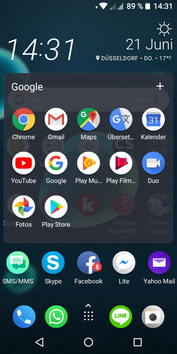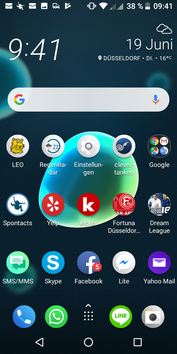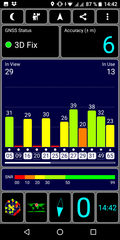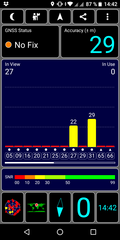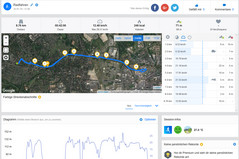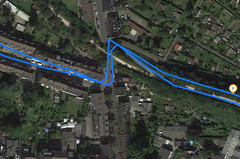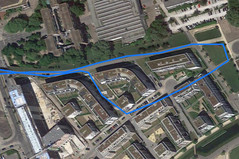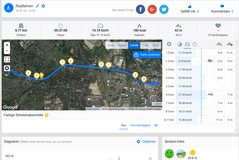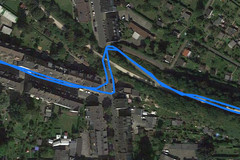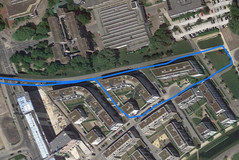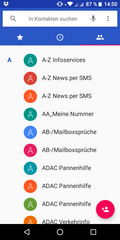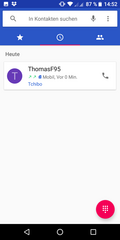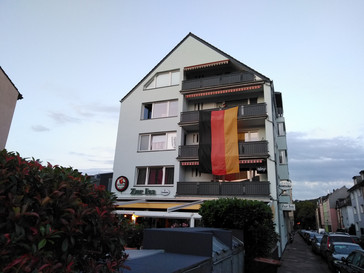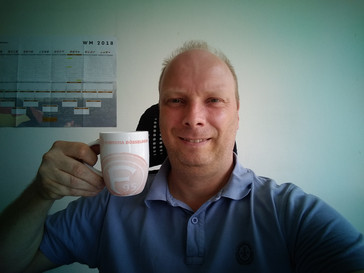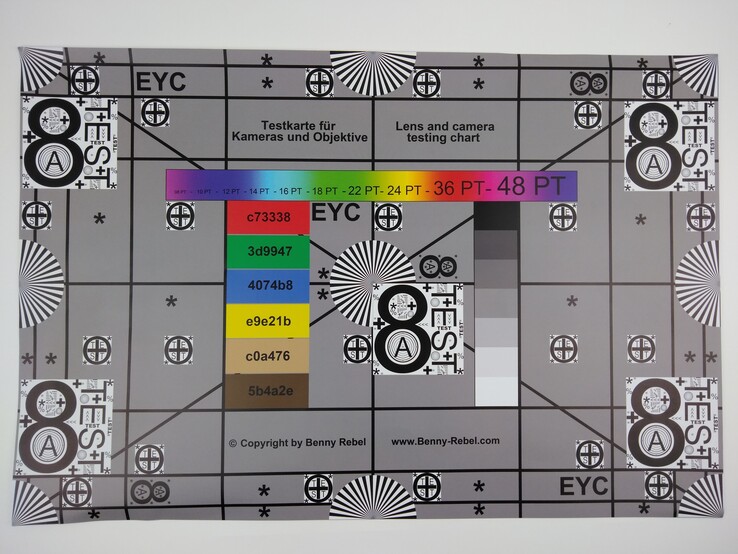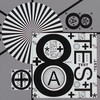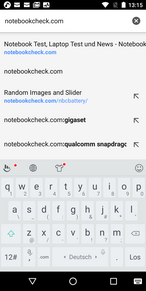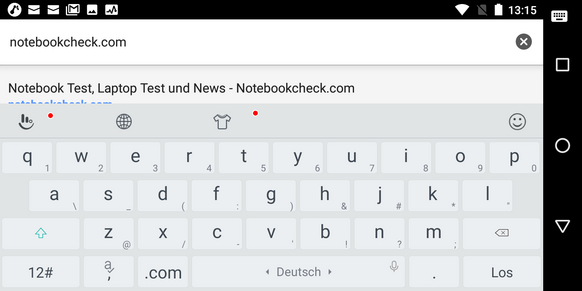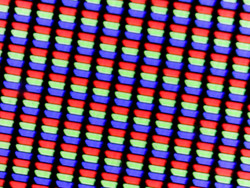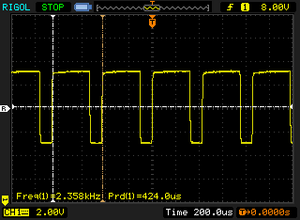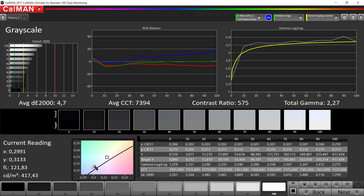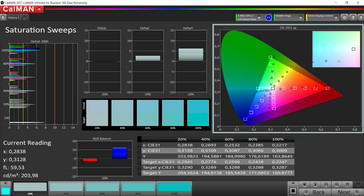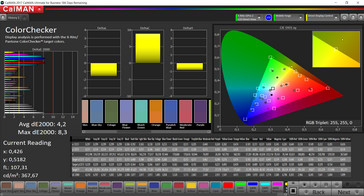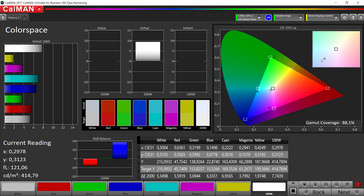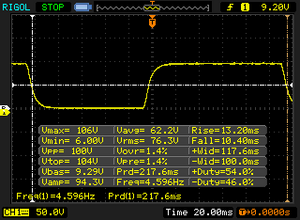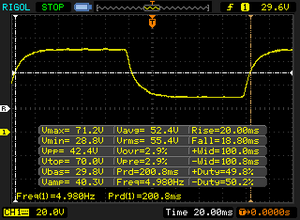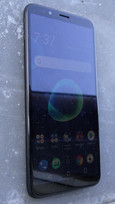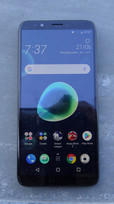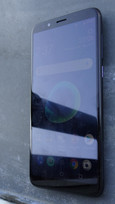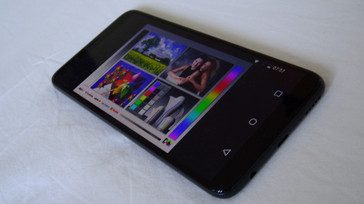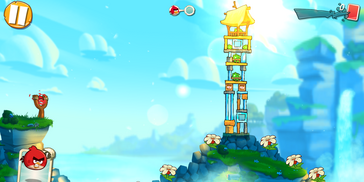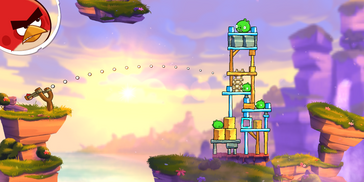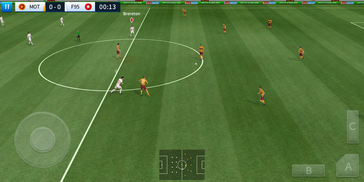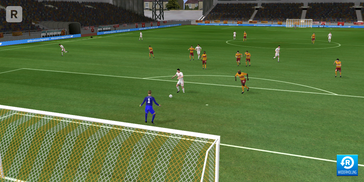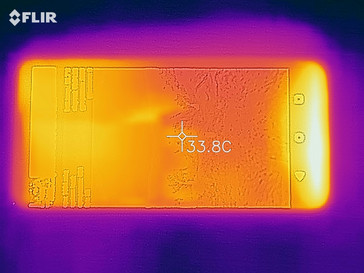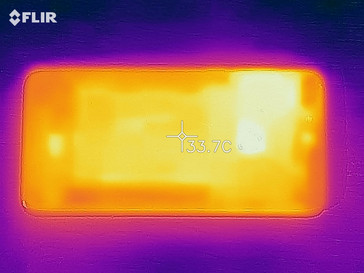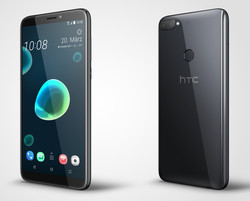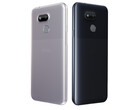HTC Desire 12 Plus Smartphone Review
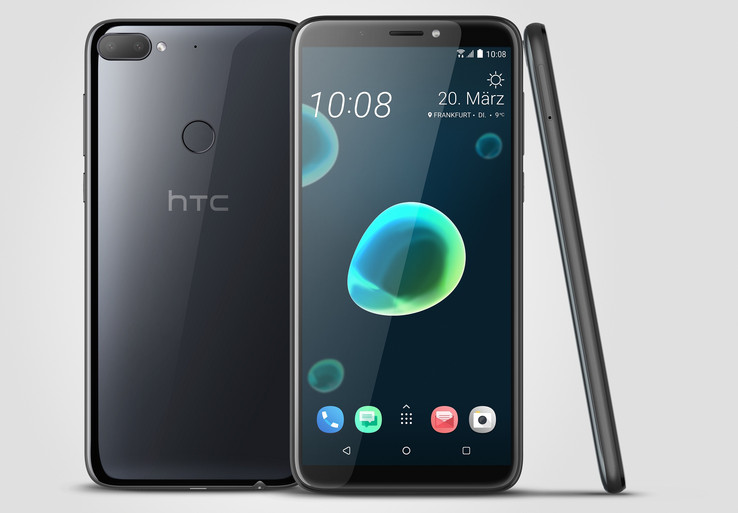
The HTC Desire 12 Plus has a 1440x720 resolution display like its smaller sibling. However, the Desire 12 Plus has a 0.5-inch larger display. This means that the Desire 12 Plus has a 268 PPI display, while its smaller sibling has a sharper 293 PPI display.
This is the only significant concession though. The Desire 12 Plus ships with Android Oreo 8.0 and has a fingerprint sensor on the rear of the device unlike the Desire 12.
The Desire 12 Plus has a 2,965 mAh built-in battery and 32 GB of internal storage that can be expanded with up to 2 TB microSD cards. You can insert a second nano-SIM instead of a microSD card too.
The Desire 12 Plus is powered by a Qualcomm Snapdragon 450 SoC, while its smaller sibling is powered by a MediaTek MT6739 SoC. The Snapdragon 450 integrates an octa-core ARM Cortex A53 CPU that clocks up to 1.8 GHz. This is supported by 3 GB RAM and a Qualcomm Adreno 506 GPU that is clocked at 650 MHz.
There are dual rear-facing cameras. The main is a 13 MP sensor which is supported by a 2 MP sensor for bokeh effect photographs. The main camera can record videos in up to 1080p, as can the 8 MP front-facing camera.
The Desire 12 Plus has a 249-Euro recommended retail price (~$292) and is 50 Euros (~$58) more expensive than its smaller sibling. At the time of writing, the Desire 12 Plus is available online for around 230 Euros (~$270).
We have chosen to compare the Desire 12 Plus against the Huawei P20 Lite, the Motorola Moto G6 Plus, the Nokia 6 (2018) and the Sony Xperia XA2. The Desire 12 Plus is cheaper than all our comparison devices which range from 250 Euros to 290 Euros (~$293 to ~$340).
Case
Unfortunately, the Desire 12 Plus has neither a dustproof nor waterproof case. The back has a shiny finish that attracts fingerprints. This makes the back of the device feel greasy and increases the risk of the device slipping from out of your hands. The fingerprint sensor is sufficiently far from the rear-facing cameras so that you don’t accidentally touch the latter rather than the former. Our test device takes a long time to wake up once unlocked with a fingerprint though, which is disappointing.
The power button and volume rocker are on the right-hand side of the device and are the Desire 12 Plus’ only hardware buttons. The SIM and microSD card tray is on the opposite side.
The plastic case lacks the premium feel of metal cases, but plastic does have its advantages, one of which is weight. The Desire 12 Plus weighs 157 g, which is comparatively light for a smartphone of this size. The Desire 12 Plus measures 158.2 x 76.6 x 8.4 mm, which will be too large for one-handed use with most people. Phablets are intended to be used with two hands mind you.
Connectivity
The Desire 12 Plus is powered by a Qualcomm Snapdragon 450, an SoC that we have seen powering many mid-range Android smartphones. The Snapdragon 450 integrates an octa-core 64-bit ARM Cortex A53 CPU which clocks up to 1.8 GHz. This combines with a Qualcomm Adreno 506 GPU with a 650 MHz maximum clock speed. The Snapdragon 450 includes a Qualcomm Snapdragon X9 LTE modem which supports up to 300 Mbps peak download speeds and 150 Mbps peak upload speeds. The Snapdragon 450 also supports IEEE 802.11 a/b/g/n/ac Wi-Fi and Bluetooth 4.1. The Desire 12 Plus also supports 1080p H.264 decoding and encoding and HEVC decoding.
The Desire 12 Plus’ greatest strength is its storage flexibility. The 32 GB of internal storage can be expanded by up to 2 TB microSD cards.
Charging and wired data transfer is handled by the Micro USB 2.0 port on the bottom of the device. There is also a notification LED above the display.
Software
The Desire 12 Plus ships with Android Oreo 8.0, which is a newer version of Android than its smaller sibling. Oddly, HTC has not preinstalled Google Assistant, but this can be downloaded from the Google Play Store.
HTC has added its HTC Sense UI atop of Android Oreo, which includes additional apps like News Republic and HTC BlinkFeed. There is also a sound recorder and an FM radio app too.
Communication & GPS
While the Snapdragon 450 SoC supports IEEE 802.11 a/b/g/n/ac Wi-Fi, the Desire 12 Plus only supports b/g/n standards, which means that it will work only on 2.4 GHz networks. Our test device achieved a slow 45 Mb/s in our iperf3 Client receiving test and 46.8 Mb/s in the transmission test when connected to our Linksys EA 8500 reference router. These results are considerably worse than our comparison devices. The Desire 12 Plus is at least 75% slower than our slowest comparison device in these tests.
Our test device achieved a -32 dBm signal attenuation when next to our O2 HomeBox 2 router, which is comparatively weak.
Naturally, the Desire 12 Plus works with LTE, GSM and UMTS networks. The device supports Bluetooth 4.1 too, but there is no NFC chip for use with apps like Google Pay.
| Networking | |
| iperf3 transmit AX12 | |
| Nokia 6 2018 | |
| Motorola Moto G6 Plus | |
| Sony Xperia XA2 | |
| Huawei P20 Lite | |
| HTC Desire 12 Plus | |
| iperf3 receive AX12 | |
| Motorola Moto G6 Plus | |
| Sony Xperia XA2 | |
| Nokia 6 2018 | |
| Huawei P20 Lite | |
| HTC Desire 12 Plus | |
The Desire 12 Plus supports GPS, A-GPS and GLONASS for location services. Our test device struggled to locate us indoors, only managing a location accuracy of up to 29 meters. This is to be expected for a device with this price. The Desire 12 Plus achieved much finer location accuracy when tested outdoors, with a location accuracy of up to six meters.
We took the Desire 12 Plus on a bike ride to test its location accuracy against a professional navigation device, the Garmin Edge 500. Our test device performed well, recording the course and only deviating by 10 meters over an 8.77 km ride. On closer inspection, this minor difference in distance covered is because our test device lacked the Garmin’s GPS accuracy when cornering. Overall, the Desire 12 Plus should be suitable for all general navigation tasks and even those where higher precision is required.
Telephone Function & Call Quality
The Desire 12 Plus incorporates the Google Phone app to handle calls and contact management.
Our test device struggled for mobile reception when indoors, which is disappointing. Call quality over speakerphone could be better too as the speakers noticeably rattled when our counterpart spoke.
The Desire 12 Plus’ greatest strength is its flexibility. The device accepts two nano SIMs, either of which can be used over LTE.
Cameras
Photography is not the Desire 12 Plus’ strong suit. There is a dual rear-facing camera system that combines a 13 MP main sensor with an f/2.2 aperture and a 2 MP secondary sensor. The secondary sensor is used to create bokeh effect photos. The aperture is relatively small for a smartphone released in 2018. Our test device produces dull-looking photos despite supporting HDR and Phase Detection Auto Focus (PDAF). The LED flash is strong though, which benefits photos and videos. Videos can be recorded in up to 1080p and remain relatively sharp thanks to image stabilization.
The Desire 12 Plus has an 8 MP fixed-focus front-facing camera with an f/2.0 aperture. The front-facing camera supports face detection, HDR and even has a dedicated LED flash. The quality of selfies is modest at best though when compared to the competition. The front-facing camera can record videos in up to 1080p like the rear-facing camera.
We also subjected the Desire 12 Plus to camera tests under controlled lighting conditions. During these tests, we photograph a test chart that simulates difficult details for cameras to accurately capture, like fine lines or text against a colored background.
The Desire 12 Plus performs relatively well given the results of our more practical tests. Pictures are appropriately exposed, but light colors are too dark and dark colors are too light. Likewise, text against a red background is slightly blurred, while the edges of lines are somewhat distorted by surrounding colors.
Accessories & Warranty
The Desire 12 Plus comes with a modular charger, a USB Type-A to Micro USB cable and a quick-start guide. There are no headphones included in the box.
HTC provides the Desire 12 Plus with 24 months manufacturer’s warranty. Please see our Guarantees, Return policies and Warranties FAQ for country-specific information.
Input Devices & Operation
Navigating throughout the device is handled by the standard Android implementation of three on-screen buttons located at the bottom of the display. The Home button is flanked by a Back button on the left-hand side and a Recents (Overview) button on the opposite side.
There is also a fingerprint sensor on the rear case that can be used to unlock the device among other things. Our test device feels slower to wake having been unlocked with the fingerprint sensor though. Fortunately, the fingerprint sensor and rear camera array are far enough apart for there to be no accidental touches.
HTC has opted for the TouchPal keyboard as the Desire 12 Plus’s default keyboard. We were only able to download two languages at once for some reason. While the keyboard works well enough in portrait mode, there are issues with it being used in landscape mode. The default keyboard occupies much of the 6.0-inch display in landscape mode, which makes it harder to type than on other keyboards. There is no way to reduce the keyboard height either. The keys in the bottom corners are difficult to use in landscape mode too.
We would recommend downloading a keyboard like Google’s Gboard if you need better language support. Gboard is just better designed and executed in general.
Display
The display has left us with a mixed impression. It reacts quickly to inputs, but it is difficult to read outside because of its highly reflective finish.
The Desire 12 Plus has a 6.0-inch display with a 1440x720 native resolution and a 2:1 aspect ratio. You may see this referred to as an 18:9 aspect ratio elsewhere. Watching videos is more enjoyable than on a 16:9 display as the video fills more of the frame. Many games are still optimized for 16:9 though, so there is some letterboxing when played on the Desire 12 Plus and other devices with 2:1 aspect ratio displays.
One gripe we have is the poorly implemented auto brightness. Typically, the display is darker than needed, particularly in games. We would advise controlling brightness manually instead.
| |||||||||||||||||||||||||
Brightness Distribution: 93 %
Center on Battery: 418 cd/m²
Contrast: 597:1 (Black: 0.7 cd/m²)
ΔE ColorChecker Calman: 4.2 | ∀{0.5-29.43 Ø4.78}
ΔE Greyscale Calman: 4.7 | ∀{0.09-98 Ø5}
88.1% sRGB (Calman 2D)
Gamma: 2.27
CCT: 7394 K
| HTC Desire 12 Plus IPS, 1440x720, 6" | Huawei P20 Lite IPS, 2280x1080, 5.8" | Motorola Moto G6 Plus IPS, 2160x1080, 5.9" | Nokia 6 2018 IPS, 1920x1080, 5.5" | Sony Xperia XA2 IPS, 1920x1080, 5.2" | |
|---|---|---|---|---|---|
| Screen | 12% | 48% | -13% | 9% | |
| Brightness middle (cd/m²) | 418 | 528 26% | 761 82% | 417 0% | 513 23% |
| Brightness (cd/m²) | 414 | 525 27% | 723 75% | 421 2% | 506 22% |
| Brightness Distribution (%) | 93 | 89 -4% | 90 -3% | 88 -5% | 93 0% |
| Black Level * (cd/m²) | 0.7 | 0.51 27% | 0.69 1% | 0.61 13% | 0.42 40% |
| Contrast (:1) | 597 | 1035 73% | 1103 85% | 684 15% | 1221 105% |
| Colorchecker dE 2000 * | 4.2 | 4.7 -12% | 2.4 43% | 6.1 -45% | 5 -19% |
| Colorchecker dE 2000 max. * | 8.3 | 8.9 -7% | 5.2 37% | 11.2 -35% | 11.4 -37% |
| Greyscale dE 2000 * | 4.7 | 6.4 -36% | 1.8 62% | 7.1 -51% | 7.8 -66% |
| Gamma | 2.27 97% | 2.22 99% | 2.21 100% | 2.16 102% | 2.2 100% |
| CCT | 7394 88% | 7987 81% | 6312 103% | 8362 78% | 7964 82% |
* ... smaller is better
Screen Flickering / PWM (Pulse-Width Modulation)
| Screen flickering / PWM detected | 2358 Hz | ≤ 4 % brightness setting | |
The display backlight flickers at 2358 Hz (worst case, e.g., utilizing PWM) Flickering detected at a brightness setting of 4 % and below. There should be no flickering or PWM above this brightness setting. The frequency of 2358 Hz is quite high, so most users sensitive to PWM should not notice any flickering. In comparison: 53 % of all tested devices do not use PWM to dim the display. If PWM was detected, an average of 8118 (minimum: 5 - maximum: 343500) Hz was measured. | |||
Our test device achieved a relatively low average maximum brightness of 414 cd/m² using X-Rite i1Pro 2. Activating the ambient light sensor boosts this value to 421 cd/m², but this is still considerably lower than all but the Nokia 6 (2018) out of our comparison devices.
The more realistic Average Picture Level 50 (APL50) test yields 418 cd/m² at the centre of the display and a 93% brightness uniformity, the latter of which equals the best of our comparison devices. Our test device has a 0.7 cd/m² black value, which is relatively high. This combined with the low maximum brightness results in a 597:1 contrast ratio. This is appalling when compared with most of our comparison devices. The Huawei P20 Lite, the Motorola Moto G6 Plus and the Sony Xperia XA2 all have displays that exceed a 1,000:1 contrast ratio. This will give these devices much punchier colors than the Desire 12 Plus.
The IPS panel has comparatively dull colors in daily use because of this weak contrast ratio. The contrast ratio is just adequate for a device with this price, but it is nowhere near most of our comparison devices.
Our test device is relatively sRGB color space accurate, but it does not set itself apart from the competition. DeltaE deviations are within expected levels too for a device with this price.
Display Response Times
| ↔ Response Time Black to White | ||
|---|---|---|
| 26.6 ms ... rise ↗ and fall ↘ combined | ↗ 13.2 ms rise | |
| ↘ 10.4 ms fall | ||
| The screen shows relatively slow response rates in our tests and may be too slow for gamers. In comparison, all tested devices range from 0.1 (minimum) to 240 (maximum) ms. » 66 % of all devices are better. This means that the measured response time is worse than the average of all tested devices (20.2 ms). | ||
| ↔ Response Time 50% Grey to 80% Grey | ||
| 38.8 ms ... rise ↗ and fall ↘ combined | ↗ 20 ms rise | |
| ↘ 18.8 ms fall | ||
| The screen shows slow response rates in our tests and will be unsatisfactory for gamers. In comparison, all tested devices range from 0.165 (minimum) to 636 (maximum) ms. » 57 % of all devices are better. This means that the measured response time is worse than the average of all tested devices (31.6 ms). | ||
The Desire 12 Plus has relatively stable viewing angles thanks to its IPS display. However, we did notice small color distortions and an undesirable amount of backlight distortion at acute angles.
Performance
The Desire 12 Plus is powered by a Qualcomm Snapdragon 450 SoC, which incorporates an ARM Cortex A53 CPU. This 64-bit octa-core processor clocks up to 1.8 GHz and is supported by 3 GB of RAM. This combination should be powerful enough for quickly opening apps and swiftly inputting text, but app load times will be longer if there are too many applications running in the background.
| AnTuTu v6 - Total Score (sort by value) | |
| Huawei P20 Lite | |
| Motorola Moto G6 Plus | |
| Nokia 6 2018 | |
| Sony Xperia XA2 | |
| Average Qualcomm Snapdragon 450 (54731 - 60077, n=10) | |
| AnTuTu v7 - Total Score (sort by value) | |
| HTC Desire 12 Plus | |
| Huawei P20 Lite | |
| Motorola Moto G6 Plus | |
| Nokia 6 2018 | |
| Sony Xperia XA2 | |
| Average Qualcomm Snapdragon 450 (56497 - 73468, n=11) | |
| PCMark for Android | |
| Work performance score (sort by value) | |
| HTC Desire 12 Plus | |
| Huawei P20 Lite | |
| Motorola Moto G6 Plus | |
| Nokia 6 2018 | |
| Sony Xperia XA2 | |
| Average Qualcomm Snapdragon 450 (4836 - 6062, n=14) | |
| Work 2.0 performance score (sort by value) | |
| HTC Desire 12 Plus | |
| Huawei P20 Lite | |
| Motorola Moto G6 Plus | |
| Nokia 6 2018 | |
| Sony Xperia XA2 | |
| Average Qualcomm Snapdragon 450 (4171 - 4759, n=14) | |
The Desire 12 Plus struggles against our comparison devices in browser benchmarks. Typically, our test device is at least 10% slower than the competitors, but it is roughly on par with the average of Snapdragon 450-powered devices that we have currently tested. Subjectively, websites take longer to load than on other similarly priced devices. Scrolling animations remained smooth throughout our testing though.
| JetStream 1.1 - Total Score | |
| Nokia 6 2018 (Browser: Chrome 65) | |
| Motorola Moto G6 Plus (Chrome 66) | |
| Sony Xperia XA2 (Chrome 65.0.3325.109) | |
| Huawei P20 Lite (Chrome 63) | |
| Average Qualcomm Snapdragon 450 (22 - 22.7, n=13) | |
| HTC Desire 12 Plus (Chrome 67) | |
| Octane V2 - Total Score | |
| Average of class Smartphone (2228 - 121337, n=200, last 2 years) | |
| Motorola Moto G6 Plus (Chrome 66) | |
| Nokia 6 2018 (Browser: Chrome 65) | |
| Sony Xperia XA2 (Chrome 65.0.3325.109) | |
| Huawei P20 Lite | |
| HTC Desire 12 Plus (Chrome 67) | |
| Average Qualcomm Snapdragon 450 (3470 - 4115, n=14) | |
| Mozilla Kraken 1.1 - Total | |
| HTC Desire 12 Plus (Chrome 67) | |
| Average Qualcomm Snapdragon 450 (11012 - 11863, n=14) | |
| Huawei P20 Lite (Chrome 63) | |
| Sony Xperia XA2 (Chrome 65.0.3325.109) | |
| Nokia 6 2018 (Browser: Chrome 65) | |
| Motorola Moto G6 Plus (Chrome 66) | |
| Average of class Smartphone (257 - 28190, n=155, last 2 years) | |
| WebXPRT 2015 - Overall | |
| Nokia 6 2018 | |
| Motorola Moto G6 Plus (Chrome 66) | |
| Sony Xperia XA2 (Chrome 65.0.3325.109) | |
| Average Qualcomm Snapdragon 450 (90 - 103, n=7) | |
| Huawei P20 Lite (Chrome 63) | |
* ... smaller is better
The Desire 12 Plus has 32 GB of eMMC flash memory, which is typical for current devices at this price point. Internal storage performance falls short of the Huawei P20 Lite and the Moto G6 Plus, but it is often well ahead of the class average.
We tested microSD card performance using our Toshiba Exceria Pro M501 reference card which has 270 MB/s theoretical read and 150 MB/s theoretical write speeds. Our test unit is on par with many of our comparison devices and is markedly ahead of the average of handsets that we have tested with 32 GB eMMC flash memory and the class average too.
| HTC Desire 12 Plus | Huawei P20 Lite | Motorola Moto G6 Plus | Nokia 6 2018 | Sony Xperia XA2 | Average 32 GB eMMC Flash | Average of class Smartphone | |
|---|---|---|---|---|---|---|---|
| AndroBench 3-5 | 121% | 109% | 4% | 5% | 9% | 1485% | |
| Sequential Read 256KB (MB/s) | 252.8 | 293.9 16% | 286.6 13% | 272.6 8% | 271.5 7% | 242 ? -4% | 2223 ? 779% |
| Sequential Write 256KB (MB/s) | 135.6 | 198.3 46% | 216.1 59% | 118.3 -13% | 127.4 -6% | 100.5 ? -26% | 1838 ? 1255% |
| Random Read 4KB (MB/s) | 65.7 | 48.19 -27% | 58.4 -11% | 38.78 -41% | 43.07 -34% | 43.1 ? -34% | 295 ? 349% |
| Random Write 4KB (MB/s) | 9.16 | 71.1 676% | 62.8 586% | 15.3 67% | 13.82 51% | 22.3 ? 143% | 335 ? 3557% |
| Sequential Read 256KB SDCard (MB/s) | 83.4 ? | 83.5 ? 0% | 83.7 ? 0% | 83.4 ? 0% | 86 ? 3% | 71.8 ? -14% | |
| Sequential Write 256KB SDCard (MB/s) | 59.9 ? | 69 ? 15% | 62.1 ? 4% | 61.3 ? 2% | 64.8 ? 8% | 52.9 ? -12% |
Games
The Snapdragon 450 is equipped with a Qualcomm Adreno 506 GPU that clocks up to 650 MHz. The gaming experience is frustrating. Games like Dream League Soccer are generally slow to load, and framerates are often unstable. Even simpler games like Angry Birds 2 take a while to load. Worse still, the 2:1 aspect ratio makes playing games with onscreen buttons a challenge. For example, we often involuntarily miss hit the onscreen buttons in Dream League Soccer because of the placement at the lower edge of the display due to the 2:1 aspect ratio.
Emissions
Temperature
The Desire 12 Plus manages its surface temperatures reasonably well, although some areas get hotter than others. Our test device averages 29.4 °C at idle. The temperature distribution is relatively even on the back case, with surface temperatures only differing by a maximum of 2 °C.
The front of the device is more uneven though. The bottom third of the front of the device gets noticeably hotter than the other areas of the display. The coolest area of the front of the device measured 28.7 °C at idle, which is nearly 5 °C cooler than the hottest area.
Temperature distribution remains the same under load too. Most areas of the front of our test device stay at around 30 °C, but the bottom third of the display reaches up to 36.7 °C at its hottest point. The back of the device is much cooler under load, with the hottest area only reaching 31.7 °C.
Overall, you should have no problem with surface temperatures in daily use. We achieved these surface temperatures under load by stress-testing the CPU and GPU for at least one hour. This puts the device under artificially extreme load conditions that you would not experience even during an extended gaming session.
(+) The maximum temperature on the upper side is 36.9 °C / 98 F, compared to the average of 35.2 °C / 95 F, ranging from 21.9 to 247 °C for the class Smartphone.
(+) The bottom heats up to a maximum of 31.7 °C / 89 F, compared to the average of 34 °C / 93 F
(+) In idle usage, the average temperature for the upper side is 30.2 °C / 86 F, compared to the device average of 32.9 °C / 91 F.
Speakers
The Desire 12 Plus has two speakers: One on the underside of the device and one above the display. The speakers reach 81.1 dB(A), which is quieter than our comparison devices despite having an additional speaker.
The sound quality is good overall. Medium to high pitch tones between 500 Hz and 7 kHz sound slightly linear, while super high tones above 8 kHz are adequately reproduced. There is an absence of bass though.
By contrast, listening to music over wired headphones sounds overly quiet and lacking in quality.
HTC Desire 12 Plus audio analysis
(±) | speaker loudness is average but good (81.1 dB)
Bass 100 - 315 Hz
(-) | nearly no bass - on average 29.6% lower than median
(+) | bass is linear (5.3% delta to prev. frequency)
Mids 400 - 2000 Hz
(+) | balanced mids - only 4.8% away from median
(±) | linearity of mids is average (9.1% delta to prev. frequency)
Highs 2 - 16 kHz
(±) | higher highs - on average 9.3% higher than median
(+) | highs are linear (2.9% delta to prev. frequency)
Overall 100 - 16.000 Hz
(±) | linearity of overall sound is average (29.1% difference to median)
Compared to same class
» 76% of all tested devices in this class were better, 3% similar, 21% worse
» The best had a delta of 11%, average was 35%, worst was 134%
Compared to all devices tested
» 87% of all tested devices were better, 2% similar, 11% worse
» The best had a delta of 4%, average was 24%, worst was 134%
Huawei P20 Lite audio analysis
(+) | speakers can play relatively loud (84.1 dB)
Bass 100 - 315 Hz
(-) | nearly no bass - on average 25% lower than median
(±) | linearity of bass is average (9.4% delta to prev. frequency)
Mids 400 - 2000 Hz
(+) | balanced mids - only 4.4% away from median
(±) | linearity of mids is average (8.7% delta to prev. frequency)
Highs 2 - 16 kHz
(±) | higher highs - on average 10.5% higher than median
(+) | highs are linear (3.4% delta to prev. frequency)
Overall 100 - 16.000 Hz
(±) | linearity of overall sound is average (25.5% difference to median)
Compared to same class
» 63% of all tested devices in this class were better, 7% similar, 30% worse
» The best had a delta of 11%, average was 35%, worst was 134%
Compared to all devices tested
» 78% of all tested devices were better, 5% similar, 18% worse
» The best had a delta of 4%, average was 24%, worst was 134%
Motorola Moto G6 Plus audio analysis
(+) | speakers can play relatively loud (86.3 dB)
Bass 100 - 315 Hz
(-) | nearly no bass - on average 26.3% lower than median
(±) | linearity of bass is average (7.9% delta to prev. frequency)
Mids 400 - 2000 Hz
(+) | balanced mids - only 3.9% away from median
(+) | mids are linear (5.4% delta to prev. frequency)
Highs 2 - 16 kHz
(+) | balanced highs - only 4.6% away from median
(+) | highs are linear (5.1% delta to prev. frequency)
Overall 100 - 16.000 Hz
(±) | linearity of overall sound is average (18.7% difference to median)
Compared to same class
» 21% of all tested devices in this class were better, 9% similar, 70% worse
» The best had a delta of 11%, average was 35%, worst was 134%
Compared to all devices tested
» 42% of all tested devices were better, 8% similar, 51% worse
» The best had a delta of 4%, average was 24%, worst was 134%
Nokia 6 2018 audio analysis
(+) | speakers can play relatively loud (87.2 dB)
Bass 100 - 315 Hz
(-) | nearly no bass - on average 29.6% lower than median
(±) | linearity of bass is average (7.2% delta to prev. frequency)
Mids 400 - 2000 Hz
(+) | balanced mids - only 4.4% away from median
(±) | linearity of mids is average (7% delta to prev. frequency)
Highs 2 - 16 kHz
(±) | higher highs - on average 6.9% higher than median
(+) | highs are linear (3.2% delta to prev. frequency)
Overall 100 - 16.000 Hz
(±) | linearity of overall sound is average (23.2% difference to median)
Compared to same class
» 52% of all tested devices in this class were better, 7% similar, 41% worse
» The best had a delta of 11%, average was 35%, worst was 134%
Compared to all devices tested
» 69% of all tested devices were better, 5% similar, 26% worse
» The best had a delta of 4%, average was 24%, worst was 134%
Sony Xperia XA2 audio analysis
(+) | speakers can play relatively loud (85.6 dB)
Bass 100 - 315 Hz
(-) | nearly no bass - on average 28% lower than median
(±) | linearity of bass is average (11% delta to prev. frequency)
Mids 400 - 2000 Hz
(±) | reduced mids - on average 5.5% lower than median
(+) | mids are linear (5.6% delta to prev. frequency)
Highs 2 - 16 kHz
(±) | higher highs - on average 7.6% higher than median
(+) | highs are linear (2.2% delta to prev. frequency)
Overall 100 - 16.000 Hz
(±) | linearity of overall sound is average (23.6% difference to median)
Compared to same class
» 53% of all tested devices in this class were better, 8% similar, 39% worse
» The best had a delta of 11%, average was 35%, worst was 134%
Compared to all devices tested
» 70% of all tested devices were better, 6% similar, 24% worse
» The best had a delta of 4%, average was 24%, worst was 134%
Battery Life
Power Consumption
The Desire 12 Plus’ power consumption is on par with the competition. Our test device consumes a minimum of 0.68 W and averages 2.05 W at idle. Power consumption rises to an average of 3 W under load and a maximum of 4.57 W. Overall, our test device consumes slightly more than the average of Snapdragon 450-powered devices that we have tested. Conversely, the Desire 12 Plus is about 11% more efficient than class average power consumption.
Unfortunately, the Desire 12 Plus does not support Quick Charge, so the device takes around two hours to fully recharge.
| Off / Standby | |
| Idle | |
| Load |
|
Key:
min: | |
| HTC Desire 12 Plus 2965 mAh | Huawei P20 Lite 3000 mAh | Motorola Moto G6 Plus 3200 mAh | Nokia 6 2018 3000 mAh | Sony Xperia XA2 3300 mAh | Average Qualcomm Snapdragon 450 | Average of class Smartphone | |
|---|---|---|---|---|---|---|---|
| Power Consumption | -19% | 6% | 7% | 15% | -19% | -50% | |
| Idle Minimum * (Watt) | 0.68 | 0.98 -44% | 0.5 26% | 0.67 1% | 0.39 43% | 0.794 ? -17% | 0.848 ? -25% |
| Idle Average * (Watt) | 2.05 | 2 2% | 1.78 13% | 1.76 14% | 1.61 21% | 2.27 ? -11% | 1.435 ? 30% |
| Idle Maximum * (Watt) | 2.12 | 2.11 -0% | 1.81 15% | 1.78 16% | 1.62 24% | 2.48 ? -17% | 1.621 ? 24% |
| Load Average * (Watt) | 3 | 3.9 -30% | 3.3 -10% | 2.82 6% | 3.12 -4% | 3.95 ? -32% | 6.99 ? -133% |
| Load Maximum * (Watt) | 4.57 | 5.62 -23% | 5.14 -12% | 4.56 -0% | 4.92 -8% | 5.38 ? -18% | 11.3 ? -147% |
* ... smaller is better
Battery Life
The Desire 12 Plus has a 2,965 mAh battery, which is marginally smaller than those in our comparison devices. We tested the Desire 12 Plus using our Wi-Fi battery test in which we run a script that simulates the load required to render websites and measure how long it takes for devices to fully discharge. The Desire 12 Plus lasted just over nine hours in this test. This is considerably lower than the Nokia 6 (2018) and the Sony Xperia XA2, which lasted almost 16 and 15 hours, respectively.
The Desire 12 Plus should last a full day in practice though, but most of our comparison devices should last closer to two days.
| HTC Desire 12 Plus 2965 mAh | Huawei P20 Lite 3000 mAh | Motorola Moto G6 Plus 3200 mAh | Nokia 6 2018 3000 mAh | Sony Xperia XA2 3300 mAh | |
|---|---|---|---|---|---|
| Battery runtime | |||||
| WiFi v1.3 (h) | 9.1 | 9.7 7% | 11.7 29% | 15.7 73% | 14.8 63% |
Pros
Cons
Verdict
The greatest strength of the HTC Desire 12 Plus is its flexibility. The ample 32 GB of internal storage can be expanded with up to 2 TB microSD cards. The device even supports two nano-SIMs, although this comes at the cost of using a microSD card.
The HTC Desire 12 Plus has a huge display that allows the smartphone to double as a tablet replacement too. The inclusion of support for 2 TB microSD cards and dual-SIM is impressive, but HTC has done little else to make the Desire 12 Plus stand out from its competitors.
The positives for the display end at its size. It has a low resolution, which combined with low maximum brightness and a comparatively weak contrast ratio makes for a bad overall experience. What’s more, the display has a highly reflective finish that renders the Desire 12 Plus impractical to use outside on sunny days.
The choice of CPU is adequate but not impressive. Neither is the battery life, which falls well short of our comparison devices.
The Desire 12 Plus ships with Android Oreo 8.0, which is a newer version of Android than the Desire 12 is currently operating on. The Desire 12 Plus has a fingerprint scanner too, which is another advantage that the device has over its smaller sibling. The fingerprint scanner takes a while to unlock the device though.
HTC Desire 12 Plus
- 06/27/2018 v6 (old)
Thomas Meyer




